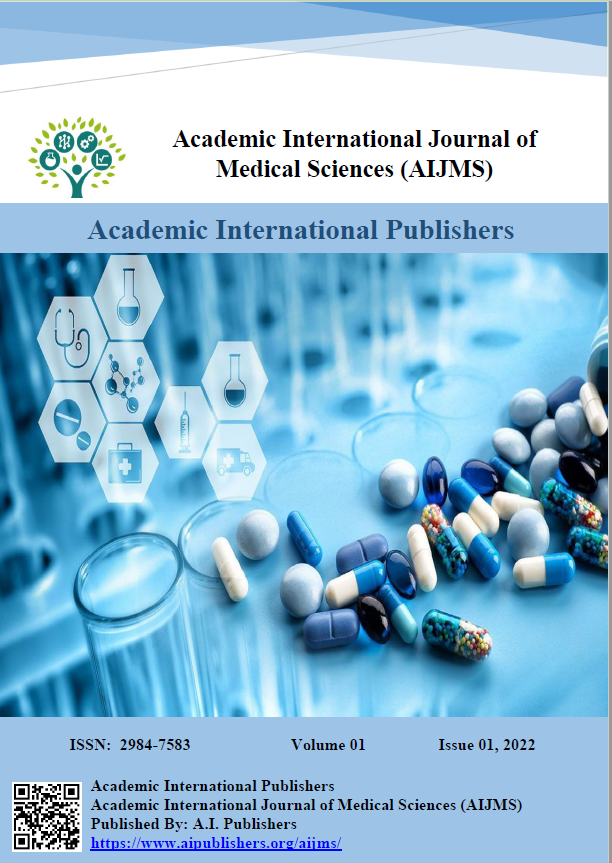Comprehensive Review of Stem Cell Research: Current Status and Future Perspectives
DOI:
https://doi.org/10.59675/M2022-03Keywords:
Stem cells; Regenerative medicine; Cell therapy; Tissue engineering; Disease modeling; Drug development; Clinical translationAbstract
- Background: Stem cell research has emerged as a cornerstone of regenerative medicine, offering unprecedented opportunities for treating degenerative diseases, understanding development, and advancing drug discovery. This review synthesizes current knowledge and recent advances in stem cell biology while examining future directions and challenges.
- Methods: We conducted a comprehensive analysis of peer-reviewed literature, clinical trials, and technological developments in stem cell research from 2000-2024. Sources included major scientific databases and trial registries, focusing on breakthrough discoveries, methodological advances, and therapeutic applications.
- Results: Recent advances have significantly improved our understanding of stem cell biology and expanded potential therapeutic applications. Key developments include enhanced protocols for maintaining and differentiating stem cells, improved reprogramming techniques for induced pluripotent stem cells, and successful clinical applications in specific diseases. Notable progress has been made in disease modeling, drug screening, and tissue engineering. However, challenges remain in scaling up production, ensuring safety, and overcoming immune rejection.
- Conclusions: While stem cell research has made substantial progress, several technical and regulatory challenges must be addressed before widespread clinical implementation. The field's future lies in integrating multiple approaches, including gene editing, artificial intelligence, and advanced bioengineering techniques. Continued innovation in methodology and careful consideration of ethical implications will be crucial for realizing the full potential of stem cell-based therapies.
References
Wei X, Yang X, Han ZP, et al. Mesenchymal stem cells: a new trend for cell therapy. Acta Pharmacol Sin. 2013;34(6):747-754. doi:10.1038/aps.2013.50
HusamAlmanseekanaa L, MansoorJasim A, Mohammed R. Isolation and characterization of bone marrowmesenchymal stem cells from rat and rabbit; a modified method. kerbala journal of pharmaceutical sciences. 2012(3).
Thomson JA, Itskovitz-Eldor J, Shapiro SS, et al. Embryonic stem cell lines derived from human blastocysts. Science. 1998;282(5391):1145-1147. doi:10.1126/science.282.5391.1145
Lo B, Parham L. Ethical issues in stem cell research. Endocr Rev. 2009;30(3):204-213. doi:10.1210/er.2008-0031
Chen KG, Mallon BS, McKay RD, Robey PG. Human pluripotent stem cell culture: considerations for maintenance, expansion, and therapeutics. Cell Stem Cell. 2014;14(1):13-26. doi:10.1016/j.stem.2013.12.005
Uccelli A, Moretta L, Pistoia V. Mesenchymal stem cells in health and disease. Nat Rev Immunol. 2008;8(9):726-736. doi:10.1038/nri2395
Pittenger MF, Discher DE, Péault BM, et al. Mesenchymal stem cell perspective: cell biology to clinical progress. NPJ Regen Med. 2019;4:22. doi:10.1038/s41536-019-0083-6
Körbling M, Estrov Z. Adult stem cells for tissue repair - a new therapeutic concept? N Engl J Med. 2003;349(6):570-582. doi:10.1056/NEJMra022361
Takahashi K, Yamanaka S. Induction of pluripotent stem cells from mouse embryonic and adult fibroblast cultures by defined factors. Cell. 2006;126(4):663-676. doi:10.1016/j.cell.2006.07.024
Yu J, Vodyanik MA, Smuga-Otto K, et al. Induced pluripotent stem cell lines derived from human somatic cells. Science. 2007;318(5858):1917-1920. doi:10.1126/science.1151526
Shi Y, Inoue H, Wu JC, Yamanaka S. Induced pluripotent stem cell technology: a decade of progress. Nat Rev Drug Discov. 2017;16(2):115-130. doi:10.1038/nrd.2016.245
Trounson A, McDonald C. Stem cell therapies in clinical trials: progress and challenges. Cell Stem Cell. 2015;17(1):11-22. doi:10.1016/j.stem.2015.06.007
Rowe RG, Daley GQ. Induced pluripotent stem cells in disease modelling and drug discovery. Nat Rev Genet. 2019;20(7):377-388. doi:10.1038/s41576-019-0100-z
Cyranoski D. The next generation of stem-cell biology. Nature. 2019;557(7706):543-546. doi:10.1038/d41586-018-05115-y
Kimbrel EA, Lanza R. Current status of pluripotent stem cells: moving the first therapies to the clinic. Nat Rev Drug Discov. 2020;19(8):523-542. doi:10.1038/s41573-020-0078-3
Doudna JA, Charpentier E. The new frontier of genome engineering with CRISPR-Cas9. Science. 2014;346(6213):1258096. doi:10.1126/science.1258096
Lancaster MA, Knoblich JA. Organogenesis in a dish: modeling development and disease using organoid technologies. Science. 2014;345(6194):1247125. doi:10.1126/science.1247125
Merkle FT, Eggan K. Modeling human disease with pluripotent stem cells: from genome association to function. Cell Stem Cell. 2013;12(6):656-668. doi:10.1016/j.stem.2013.05.016
Cossu G, Birchall M, Brown T, et al. Lancet Commission: Stem cells and regenerative medicine. Lancet. 2018;391(10123):883-910. doi:10.1016/S0140-6736(17)31366-1
Rivetti di Val Cervo P, Romanov RA, Spigolon G, et al. Induction of functional dopamine neurons from human astrocytes in vitro and mouse astrocytes in a Parkinson's disease model. Nat Biotechnol. 2017;35(5):444-452. doi:10.1038/nbt.3835
Downloads
Published
Issue
Section
License
Copyright (c) 2022 Academic International Journal of Medical Sciences

This work is licensed under a Creative Commons Attribution 4.0 International License.





